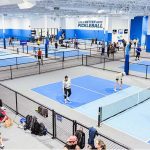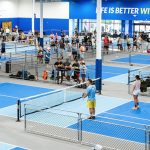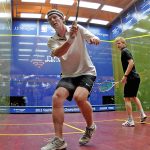Lace-up ankle braces are designed to prevent acute ankle injury in amateur athletes. But until now, that statement wasnt backed up with any hard-core evidence. A recent study, the most extensive of its kind, shows that lace-up ankle braces, specifically the McDavid 195 Ultralight Ankle Brace, prevents most acute ankle injuries in amateur basketball players.
A pair of researchers at the University of Wisconsin Sports Medicine-Tim McGuine, PhD, ATC, and Dr. Alison Brooks-designed the study to demonstrate the positive effect of wearing an ankle brace over a career. The controlled study involved 1460 male and female (ages 13-18) basketball players from 46 high school schools across the country. During the 2009-2010 season, one group (740 student-athletes) wore McDavid 195 Ultralight Ankle Braces exclusively while the other group (720 student-athletes) did not wear any braces. Results of the study show that the athletes who didnt wear the McDavid lace-up ankle brace showed a rate of injury nearly three times higher than those who wore the brace.
According to representatives from McDavid, the decision to use their lace-up braces was collaboration between players, McGuine and Brooks.
They started by soliciting ankle braces from all manufacturers who were willing to participate, Rey Corpuz, director of Marketing for McDavid said. A sample group of players were given several brands of ankle braces to try on, and were then asked: ‘If you were to purchase one of these braces, which would you choose? According to McGuine, the choice was determined on fit, comfort, effectiveness and whether or not the athletes would actually buy the brace on their own. It came down to two brands, including ours, and in the end, the decision was made to proceed with McDavid exclusively.
“McDavid ankle braces were used exclusively in the study because it was one of the ankle braces that players gravitated towards because they thought it was one of the most comfortable and gave the best support when sampling it over several other brands,” says McGuine.
Through the study, Dr. McGuine concluded that basketball has one of the highest rates for ankle injuries, and concludes that a simple brace, in this case, the McDavid 195 Ultralight brace, can help keep an athlete on the court instead of in the training room.
“Ankle injuries are one of the most common types of injuries, especially among high school basketball players,” Brooks said. “Once an athlete has sustained an injury, rehab and a brace can reduce the risk of re-injury.”
Injuries can also be costly. According to the study, each injury costs close to $12,000 dollars per athlete, in direct and indirect costs to treat. In addition, 30 percent of the athletes who sustain ankle injuries will experience long-term negative effects as an adult.
In the United States, an estimated $2 billion was spent on direct and indirect costs in treating ankle sprain injuries of high-school athletes in 2007, said Dr. McGuine.
Acute ankle injuries are typically the result of a traumatic event most often caused by the sudden stops and starts common to a sport like basketball. Ankle injuries are the most common type of injury in high school athletes in the United States, with 78,000 occurring in female and male high school basketball players annually.
“Seeing more than three times the amount of acute ankle injuries without the brace is a telling statistic,” McGuine said. “Having more players wear a brace on a regular basis would help prevent injury.”
Furthermore, the study proves that the effectiveness of lace-up braces is independent of an athletes injury history. This combats the previously-held notion (from studies using alternative types of intervention products) that braces are more effective in athletes with a previous history of injury than those without.
According to a statement made by McGuine in 2009, the study was also intended to help justify the use and cost (can range from $35 to $70 depending on the brand) of lace-up ankle braces to athletes and their parents.















